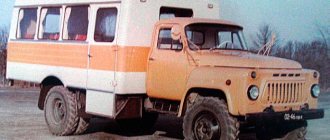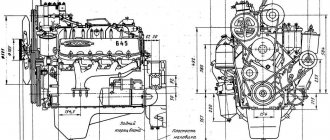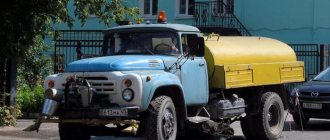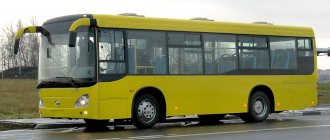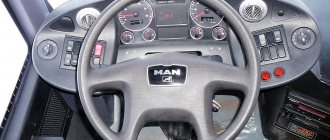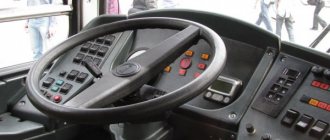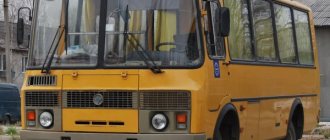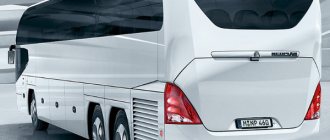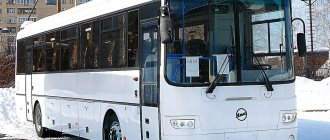German bus brand
For the defunct North American licensee of Neoplan from 1981 to 2006, see Neoplan USA.
| This article need additional quotes for verification . |
Neoplan Bus GmbH
| Type | Private limited liability company – GmbH[1] |
| Industry | Automotive industry |
| Based | July 1, 1935[2][3] |
| Founder | Gottlob Auwerter[2] |
| Headquarters | Stuttgart, Germany[2] |
| Key people | Joachim Reinmuth, Chairman of the Board former designers: Albrecht Auwerter, Bob Lee, Konrad Auwerter |
| Products | Buses Coaches Trolleybuses[4] |
| Amount of workers | 1,300 |
| Parent | MAN Truck & Bus SE |
| Web site | Neoplan-bus.com |
Neoplan Bus GmbH
is a German automobile company that produces buses, trolleybuses and coaches. This is a subsidiary of MAN Truck & Bus SE.
Photos inside the cabin, seat locations and more
The model range of the German brand is represented by machines of various types. Now the manufacturer is focusing on producing long-distance models . The information presented below will allow you to take a closer look at the models that are of increased interest to Internet users. Photos of buses inside and outside will allow you to see and appreciate the advantages and features of the vehicles. A significant part of the photographs were taken from the official website of the brand. But the company does not provide the opportunity to familiarize itself with the location of seats in the cabin, so this information is not in the article. But general photos and videos will allow you to get an idea of the internal structure of the bus interiors.
About the advantages and disadvantages
Advantages:
- a sophisticated active safety system that complements excellent passive safety;
- the driver's workplace is designed so that driving does not cause fatigue;
- quite powerful engine with low fuel consumption (27 liters combined), meeting Euro 6 requirements;
- maximum comfort for passengers;
- impressive exterior and interior;
- sufficient space for servicing the motor.
Disadvantages of Tourliner:
- insufficient feedback from the steering wheel;
- expensive suspension and engine repairs
- high price compared to competitors;
- low ground clearance;
- the bus, due to its small number in the CIS, is rarely repaired by knowledgeable specialists.
Megaliner/Megaliner
Neoplan Megaliner is a transport of exclusive design and increased comfort. Capable of reaching speeds of up to 140 km/h. It can replace a mobile home for avid travelers: having equipped the interior with a bathroom and a kitchen and turned it into a full-fledged apartment, lovers of comfortable travel often travel around the world in such buses.
Detailed description and device
The 15-meter Neoplan Megaliner bus, which received the second name “Megaspace”, was introduced in 1992, mass production started in 1994.
Neoplan Megaliner double-decker bus. Photo Wikipedia
The bus was rated as 5-star not only due to its convenient and comfortable interior, but also for its overall qualities - it was long even for a tourist bus (its length was 15 meters), its width was 2.5-2.7 meters and its height reached 3.9-4.1 meters. However, its body, covered with zinc and dense steel panels , is very heavy - the total weight was 29-30 tons.
The front end is divided in two - windshield wipers are hidden under the upper part, and three headlights with rotating and fog lights on each side are located on the lower part. The upper window was straight, like the lower one, although it was located at an angle. The bus had four axles , and the first two (front) of them were rotating and movable. This was done due to the enormous weight of the body without passengers (only 24 tons). Another distinctive feature is that there are manual driver's doors on the left . Two doors led into the salon, which were moved apart by an automatic drive. The steps of the bus were also quite high, since the level of the “first floor” was approximately 1 meter and 70 centimeters, the level of the second was more than two meters.
The bumper is tilted down. Both windows were panoramic, there were three windshield wipers : two hidden below and one large one for passengers on the second floor. The salon consisted of two floors and could be made in many styles. Most often, the seats were single and provided a lot of space for movement (apparently that’s why the bus was named Megaspace). It was also possible to arrange paired chairs opposite each other. In such systems, quite comfortable and large coffee tables , which were attached either to the walls of the bus or to the pipes that supported them. There is plenty of space in the cabin for additional luggage. Very often, at the back of a 15-meter bus there was a kitchen with a bar counter, a stove for cooking, a toaster, and cabinets.
In addition to regular LCD TVs, additional plasma TVs could be located . On the second floor, the chairs could also be arranged singly, depending on the order. On the second floor there was a kitchen (if there was none on the first), also a stove and a microwave. The second floor could accommodate 30-50 people.
The driver's seat was different from the passenger seat; All buttons were backlit and easy to read. The on-screen instrument panel contained a speedometer (maximum mark) - 130 km/h, tachometer (maximum engine revolutions per minute - 3.1 thousand), engine warm-up (up to 120°C) and fuel gauge (fuel tank capacity - 600 liters) . Three hatches and courtesy lights were built throughout the cabin; air conditioning with a power of 38 kW and heating with a power of 40 kW were located on panels below the seats.
The bus was equipped with a Daimler Benz OM 442LA diesel engine and a ZF 8S 180 gearbox.
Advantages
Both front wheel axles of the Neoplan Megaliner bus are capable of turning. Photo Wikipedia
The model has many advantages and is noted for its increased comfort:
- chairs can be replaced and installed opposite each other
- large coffee tables installed
- large distance between seats
- when installing single chairs, the passage becomes wider and more comfortable
- large width and height allows you to comfortably accommodate even with a full load of 80-100 people
- on both floors there is a toilet, a kitchen, a plasma TV and a bar counter
- strong tinted windows reduce engine noise to 15-30 decibels
- Air suspension allows for smooth movement at any speed
- anti-lock and anti-slip driving systems are in effect
- Dimensions make it possible to increase the capacity of the luggage compartment to 16 cubic meters.
- without refilling it can cover 1200-1500 kilometers at a speed of 70-80 km/h
- The gearbox consists of 9 speeds.
Video
Accidents
On May 17, 2003, a Neoplan Skyliner overturned on a highway in France, killing twenty-eight people.[27]
In January 2007, a Neoplan Skyliner driven by National Express overturned and crashed on the M25 motorway near Heathrow Airport, killing two passengers;[28] a third passenger died six months later due to injuries sustained in the crash.[29] The company temporarily recalled all twelve Skyliners from service pending an investigation.[30][31] The accident was deemed to have occurred as a result of driving at excessive speed and the driver was charged with three counts of causing death by dangerous driving.[32] He was subsequently jailed for five years and disqualified from driving for a further three years.[33] No safety issues were found on the bus.[34]
On May 28, 2008, in Japan, one of two Neoplan Megaliners operated by the West JR Bus Company caught fire while in service and completely burned out. The passengers were not injured. The company resumed operations with its second Megaliner in July 2008.[35]
On March 16, 2009, one of two megaliners operated by the JR Kanto Bus company caught fire overnight in Japan. Seishun Mega-Dream Go
service between Osaka and Tokyo. 77 passengers and the driver were safely evacuated before the bus was completely destroyed.[36] Following this accident, both operators grounded the two remaining Megaliners in Japan.
On 23 June 2013, a Neoplan Tourliner was involved in the 2013 Podgorica bus accident, killing 18 people. The Tourliner derailed from the bridge and fell approximately 40 meters into a ravine. The cause of the accident is unknown, but survivors say the driver was speeding when the narrow mountain road was wet after a storm.
25 August 2022 Neoplan Tourliner operated by Infinitours kft. . The bus traveled on Flixbus lines. That day he was driving on the A1 motorway. 50 km before Salzburg, a wheel passed and the bus drove into a ditch. The bus remained standing on its wheels. The entire flank was destroyed. The bus will be repaired and returned to the Flixbus line. No harm done. Another bus from Salzburg to Flixbus line 086 in Munich, operated by Blaguss Slovakia, has arrived for passengers.
Tourliner
The Neoplan Tourliner is a German tourist bus produced in Stuttgart since 2003. In 2016, the VIP class bus underwent changes from a technical point of view, and was also transformed inside and out. The 12-meter 3-star bus is used for comfortable long-distance travel.
Best aerodynamic performance when tested in a wind tunnel. Perfect design that attracts admiring glances while driving. This is a unique specimen in its class. Experience the benefits of Sharp Cut design brought to perfection. With the Tourliner it is possible to save fuel every kilometer and delight passengers with exclusive comfort.
Thanks to a floor without built-in platforms and a wheelchair lift, passengers will be able to travel in a barrier-free environment. Comfort-enhancing features such as full LED lighting and charging sockets with a USB port at every seat complete the pleasant travel experience. The equipment of the driver's workplace, the technical solution of the bus and the performance of the engine with a common rail fuel system ensure that the Tourliner fully complies with the premium class.
Model range, description and device
In the first generation bus, what immediately catches your eye is the huge curved windshield and the trapezoidal, if you can call it that, hood cover. The headlight unit is round, separate from each other, with lenses on the low beam. The fog lights are located just below. Thanks to such an abundance of front lighting equipment and a huge windshield, which is cleaned with large wipers, visibility here is at the highest level.
Tourist bus Neoplan Tourliner. Neoplan Photos
The front doors are part of a trapezoid-shaped glass area that imitates an extension of the windshield. Rear side door without glass. There appears to be tinted solid glass running along it, providing good natural light in the cabin and an excellent view from the window.
Dimensions:
- length – 13.8 meters;
- front height – 3.8 and rear – 3.55;
- width – 2.25.
Second generation. Despite the fact that the updated model is based on the chassis of the previous series, the wheel arrangement has already decreased by one axle, and the body length has decreased by 700 mm. The body has become more streamlined, resulting in a significantly reduced air resistance coefficient of 0.36.
Externally, the bus is very similar to the previous generation: the front part of the body is almost identical, only the headlights are under a single glass, which adds aerodynamics, the hood is slightly smaller and more strict lines have been added. The rear optics have become LED, and the glass and tailgate have acquired angular, hexagonal, sweeping shapes.
Salon. There is no particular difference between the two generations in the interior, except that the new model uses higher quality and more expensive finishing materials.
The driver's workplace is real comfort, coziness and relaxation. The controls are placed so that the driver is distracted from control as little as possible. The instrument panel is informative, the indicators are large. Between the analog instruments there is an on-board display, which displays the necessary information about the status of the bus. Each block of buttons is individually backlit, making it easier to find one at night.
The instrument panel contains an LCD display for the driver and a duplicate display for passengers.
The steering wheel is large and conveniently angled.
The driver's seat is designed to provide maximum comfort on the road. There are all kinds of adjustments to suit every need and body type, as well as two seat belts.
Interior of a Neoplan Tourliner bus. Neoplan Photos
In the field of safety, the driver has been taken care of as much as possible: there are sensors installed here that monitor the driver’s concentration, which, if something happens, give sound and light signals. A lane tracking system is also installed, which in case of deviation from the trajectory will trigger emergency braking. Comfort and safety are also enhanced by adaptive cruise control and a tire pressure monitoring system.
There are all benefits for the passenger. The seats are soft, can be widely adjusted, and can also be modified. In the new generation, each seat is equipped with a USB connector for charging gadgets. On the back of the Neoplan Tourliner chair there is a small table with a cup holder and a luggage net. The updated model received LED lighting for the interior and luggage compartment.
Tinted windows block 99% of ultraviolet rays. The bus is equipped with a coffee maker, refrigerator, toilet and GPRS.
The luggage compartment, with a volume of more than 14 cubic meters, has become 18 cm wider. This once again emphasizes that the bus is exclusively tourist, designed to comfortably transport more than 50 people and safely transport a large volume of cargo in a separate compartment.
Engine and gearbox. The bus is driven by a MAN D2676 LOH engine, which develops power from 460 to 480 hp. Paired with the diesel unit is a 12-speed automated transmission from the MAN TipMatic system. Thanks to the long pass of the main pair (2.73).
The bus has a new 440-horsepower engine that meets Euro 6 requirements, which works with a ZF AS-Tronic automatic transmission. At 1000 rpm of the crankshaft, the torque is 2300 Nm. By the way, despite the location of the engine under the rear passengers, its roar will not be annoying during sharp climbs, which is facilitated by the presence of cruise control and excellent sound insulation. On the updated engine, fuel consumption was reduced by automatically adjusting the water pump performance from 20 to 95%.
Chassis. The suspension is very soft. The bus received electronically controlled shock absorbers, which allows you to adjust the stiffness of the suspension depending on the type of road surface and speed. The braking system is highly efficient and ready to work in harsh conditions without overheating. An electronic emergency braking system works in conjunction with the brakes.
Video
Chassis
The suspension, as expected, is very soft. Unfortunately, the steering is not sharp enough and there is not enough quick feedback. So, in a strong crosswind at a speed of more than 70 km/h, you will have to hold the steering wheel tightly.
The bus received electronically controlled shock absorbers, which allows you to adjust the stiffness of the suspension depending on the type of road surface and speed.
The Neoplan Tourliner braking system is highly efficient and ready to work in harsh conditions without overheating. An electronic emergency braking system works in conjunction with the brakes.
Jumbocruiser
Neoplan Jumbocruiser; also The Jumbocruiser (sometimes called simply jumbo) is a two-story, 103-passenger tourist liner manufactured by Neoplan. The Jumboruiser was designed in 1973 based on the 1971 Neoplan Skyliner. The subsequent production of the articulated airliner lasted almost 20 years, during which time the bus was unified with the Skyliner. Neoplan Jumbocruiser buses ceased production in 1993, the last model was completely redesigned and was similar to the 2000 Skyliner version.
History of creation, description and device
The bus was first shown in 1975 in Frankfurt am Main. It was not a model or a concept car created just to attract public attention. The car with a well-developed design was planned to be produced in small series, however, reality made adjustments to these plans.
The design was based on the tourist Neoplan Skyliner, and the urban “accordion” Jetliner shared the articulation mechanism.
Neoplan Jumbocruiser bus. Photo Wikipedia
The Jumbocruiser was a particularly large class bus, reaching 18 meters in length and exactly 4 meters in height.
The design of the body changed depending on the year of its construction - the Neoplan Cityliner produced in various modifications from 1971 to 2000 was taken as the base. The newest model, released in 1993, had more rounded shapes and a secondary coating of the body with metal-plastic. The body is a carriage layout. The front end is curved and “goes down” from top to bottom. Lighting technology was initially represented by single headlights , later models had 3 on each side and 1 more fog light. The bumper is welded and clearly defined. The Neoplan emblem is attached under the left headlights. Since the bus is double-decker, the windshield was not solid, but divided in two. The lower and upper windshields are panoramic. The windshield wipers of the lower windshield were located parallel to each other. The side mirrors are large in size and shaped like “bunny ears”.
The bus had 4 axles (wheel formula 8x2), the tractor could have 3 axles and the trailer 1 axle, or the tractor and trailer could have two; disc wheels. The connecting section (accordion) was made of steel and made it possible to move through it on the upper floor.
The curb weight was 11,500, technically permissible - 28,500 kg.
The engine was located behind the rear panel. The engine had a power of 326 kilowatts and was used either by a Daimler Benz or a Mercedes-Benz OM404 ; There are only 12 cylinders. The bus had 4 doors that opened remotely from the driver's cabin parallel to the body: one door on the left and three on the right.
Neoplan Jumbocruiser double-decker articulated bus. Photo Wikipedia
The cabin could accommodate 102 passengers; the lower floor accommodated fewer passengers than the upper floor. The disadvantage of the second floor was the very low ceiling height - only 1.67 m. The seats were comfortable , separate, and the backrests were well adjusted. Air conditioning was carried out using 2 climate control units. The connecting accordion did not impede the movement of passengers, but there were no longer seats under the articulation unit on the lower floor. Illumination in the cabin was realized using lamps located along the entire length of the cabin. The bus could be equipped with a toilet, refrigerator, coffee maker and many other devices.
There were also several cavities in the body that could be used for various purposes, for example, they could contain equipment for washing a bus or water for cooling the engine. The bus had large luggage compartments , the volume of which was 16 cubic meters.
The driver's position and driving comfort in younger models is close to modern: the dashboard is plastic, the ZF steering wheel is power-assisted, the seat is comfortable and adjustable in height and depth; 6-speed gearbox, small lever and located right next to the driver's seat. The same dashboard was used on the Neoplan Spaceliner bus, a double-decker 12-meter model. According to the transportation comfort class, the bus is defined as three-star.
Jumbocruiser was produced individually , according to orders from travel companies. For example, in 1976 they made three, and in 1977 - also three. The cars differed in external design and interior layout, and the bus for a customer from Japan, in accordance with local standards, had a height reduced to 3.8 m.
In total, 10 copies of the model were made until 1986. Another Jumbo was built in 1992 - its engine and drive axle were located in the rear compartment.
Jumbocruiser N138/4 remains to this day the only long-distance double-decker accordion in the world. It entered the Guinness Book of Records twice: as the largest road bus and as the largest motorhome (at the time of conversion).
Video
Jetliner: N208, 212 and other modifications
Neoplan Jetliner is a family of tourist buses manufactured from 1973 to 1999. Production resumed in 2012; some partners of the German company still offer this model (as of 2022).
Story
In 1973, the Neoplan Hamburg was replaced by the tourist Neoplan Jetliner N216. The bus had a modern welded body 12 meters long, two doors, 48 passenger seats and was equipped with air suspension. It was similar to the Hungarian intercity Ikarus 250.
Neoplan Jetliner N208 bus manufactured in 1994. Photo Wikipedia
In 1977, the 9.3 meter Neoplan Jetliner N212 . In the same year, a 14-meter three-axle Neoplan Jetliner N216/3H with 65 seats was manufactured for export.
In 1979, the Jetliner family was modernized, completely changing the body. The windshield has a greater slope.
In 1987, the Jetliner family was again updated, changing the front end and equipment.
In 1994, the family was updated for the third time, changing the front and rear lights and bumpers.
Jetliner production ceased in 1999. It was replaced by the Neoplan Euroliner. In total, the family included Neoplan Jetliner buses N208, N209, N212, N213, N214 and N216.
In 2012, Neoplan began producing buses again under the name Jetliner. These are completely new buses, representing the most budget models in the manufacturer’s range. The regular 12.3 meter Jetliner (P26) and the extended 13 meter Jetliner C (P27) are available. The buses are equipped with in-line 6-cylinder diesel engines MAN D2066 LUH 10.5 l with a power of 360 or 400 hp.
Modifications:
- N 208 with engine D 0826 LOH 04 with a power of 169 kW (230 hp) and a displacement of 6.871 liters, wheel arrangement - 4x2, weight - 11900 kg;
- N 208 - D 0826 LOH 02 with a power of 169 (230) and a volume of 6,871, wheel arrangement - 4x2, weight - 11900 kg;
- N 212 – engine with a power of 213 (290) and a volume of 10.9, wheel formula - 4×2;
- N 213 – BF 8 L 513-243 with a power of 243 (330) and a volume of 12,763, 4×2; 14.2;
- N 213 – BF 8 L 513-225 with a power of 225 (306) and a volume of 12,763, 4×2; 14.2;
- N 214, N 216 – D 2866 LOH 03 power 309 (420) and volume 11,967, 4×2; 17.6;
- N 214, N 216 – D 2866 LOH 07 with a power of 272-274 (370-373) and a volume of 11,967, 4×2; 17.6;
- N 214, N 216 – DSC 11.18 with a power of 267 (363) and a volume of 11,020, 4×2 17.6;
- N 214, N 216 – BF 8 L 513-225 with a power of 225 (306) and a volume of 12,763, 4×2 17.6;
- N 214, N 216 – BF 8 L 513-243 with a power of 243 (330) and a volume of 12,763, 4×2 17.6;
- N 214, N 216 – D 2866 TOH with power 229 (311) and volume 11,967, 4×2; 17.6;
- N 214, N 216 – DS 11.34 with a power of 228-235 (310-320) and a volume of 11,020, 4×2; 17.6;
- N 214, N 216 – DSC 11.22 with a power of 280 (381) and a volume of 11,020, 4×2; 17.6;
- N 214, N 216 – WS 295 G with a power of 295 (401) and a volume of 11,627, 4×2; 17.6;
- N 214, N 216 – WS 268 G with a power of 268 (364) and a volume of 11,627, 4×2; 17.6;
- N 216 – BF 8 L 513-243 with a power of 243 (330) and a volume of 12,763, 4×2; 17.6;
- N 216 – engine with a power of 206 (280) and a volume of 14,618, 4×2; 18;
- N 216 – OM 422.912 with power 184 (250) and volume 14.618, 4×2; 18.
Video
Starliner
The Starliner is a one-and-a-half-decker coach that provides passengers on long journeys with comprehensive comfort, high-quality equipment with a multimedia system and plenty of individual space for travelers.
Description and device
The first year of production of single-tier comfortable Starliners was 1999. The second generation of these high-tech buses appeared in 2005.
Neoplan Starliner bus (1996-2004). Photo Wikipedia
Neoplan Starliner is considered a five-star cruise ship and meets all the requirements. The bus is 13 meters long and often has three axles, reaching 3.9-4.0 meters in height and up to 2.7 meters in width. The air suspension ensures maximum ride comfort at both low and high speeds, and the seats are mounted at a height of more than two meters above road level. Considered to be “one and a half stories high,” the design allows one to significantly expand the luggage compartment to 20 cubic meters; has 3 windshield wipers - two on the lower windshield are “hidden” behind the front end in a special compartment, so they are not visible from above; the upper single windshield wiper is designed to clean the upper part of the glass for the comfort of passengers. There is a glass washing function with various types of liquids - both water and foam. On the lower part of the front end there are 4 powerful headlights, a rear bumper and fog lights. There are 6 side lights on each side; the bus has 2 doors and fairly high steps into the cabin.
The salon is made according to 5-star standards - it contains from 48 to 63 paired chairs, upholstered in leather or suede, orthopedic chairs, diverge by 150 ° and can be pulled out on special rails by 15 centimeters, with 2 types of levers, lid and offset, on the back each of them has a mini-table, a clothes hanger, an ashtray and a small drawer for storing small things; There are armrests both at the seats closer to the windows and at the adjacent ones. Xenon lighting and additional lamps are installed throughout the cabin
The driver's seat is the same as the passenger's, the instrument panel is made in the "dashboard" style, that is, semicircular. At the very top there is a large electronic clock with blue numbers. There are many buttons on the panel that are easy to read, the problem of several levers and many functions on them is resolved by processing it into one multi-joystick, programmed to both show turns, turn on the windshield wipers and give a signal, and turn on the heating or air conditioning. Since there are no special doors for the driver, the panel stretched to the left.
At the performance there are instruments - speedometer with electronic odometer, maximum mark - 128 km/h (80 mph), tachometer (maximum - 3000 engine rpm), petrol meter (capacity - 480 liters), engine warm-up indicator (maximum - 120 °C) and an integrated panel in the middle of the dial instruments with electronic turn/heat/low-fuel warning marks. GPS route indicators “Blaupunkt” are installed near the place. There are also many amenities in the cabin - a DVD TV in each section of the cabin (2-5 pieces), and there is also the ability to watch TV shows live; there is a new and modern toilet located in the rear of the cabin in a fairly large cubicle, a refrigerator, a drink machine, additional air hatches; air conditioning through the doors.
Second generation Neoplan Starliner bus. Photo Wikipedia
is powered by a MAN diesel engine with an economical Common-Rail fuel supply system, which produces from 480 to 505 hp with a 12.5 liter engine. and complies with the Euro-4 emission standard. The automatic 12-speed Tipmatic transmission, ESP, MSC, adaptive cruise control and EBS with internally ventilated brake discs are standard equipment on the NEOPLAN Starliner, as are three axles for high lane stability.
Despite information in many sources about the ongoing production of this model, it is no longer offered by the manufacturer.
Video
References
- “Neoplan VIP Class brand strategy.” MAN Nutzfahrzeuge Group
. NEOPLAN.de. Retrieved November 24, 2009. - ^ a b c d f g
"Location - NEOPLAN Bus GmbH factories."
MAN Nutzfahrzeuge Group
. NEOPLAN.de. Retrieved November 24, 2009. - ^ a b c d f g g hour
“Milestones - History from 1935 to 1953.”
MAN Nutzfahrzeuge Group
. NEOPLAN.de. Archived from the original on May 14, 2008. Retrieved November 24, 2009. - ^ a b c d
“NEOPLAN Overview” (PDF).
MAN Nutzfahrzeuge AG
.
NEOPLAN.de. 1007. Retrieved November 29, 2009. [ dead link
] - ^ a b c d
"History - the history of NEOPLAN Bus GmbH."
MAN Nutzfahrzeuge Group
. NEOPLAN.de. Archived from the original on May 14, 2008. Retrieved November 24, 2009. - ^ a b c d f f
"Milestones - History from 1961 to 1964."
MAN Nutzfahrzeuge Group
. NEOPLAN.de. Archived from the original on May 14, 2008. Retrieved November 24, 2009. - ^ a b c d
"Milestones - History from 1965 to 1971."
MAN Nutzfahrzeuge Group
.
NEOPLAN.de. Retrieved November 24, 2009. [ dead link
] - ^ a b c d f f g
"Milestones - History from 1972 to 1975."
MAN Nutzfahrzeuge Group
. NEOPLAN.de. Archived from the original on May 14, 2008. Retrieved November 24, 2009. - ^ a b c
"Milestones - History from 1976 to 1981."
MAN Nutzfahrzeuge Group
. NEOPLAN.de. Archived from the original on May 14, 2008. Retrieved November 24, 2009. - "Transport Act 1980." legislation.gov.uk
. National Archives of Great Britain. - ^ a b
"Milestones - History from 1982 to 1991".
MAN Nutzfahrzeuge Group
. NEOPLAN.de. Archived from the original on June 2, 2008. Retrieved November 24, 2009. - ^ a b
"Milestones - History from 1992 to 1996".
MAN Nutzfahrzeuge Group
. NEOPLAN.de. Archived from the original on August 27, 2009. Retrieved November 24, 2009. - "Milestones - History from 1997 to 1999." MAN Nutzfahrzeuge Group
. NEOPLAN.de. Archived from the original on June 2, 2008. Retrieved November 24, 2009. - ^ a b
"Milestones - History from 2000 to 2002".
MAN Nutzfahrzeuge Group
. NEOPLAN.de. Archived from the original on May 14, 2008. Retrieved November 24, 2009. - ^ a b c d
"Milestones - History from 2003 to 2004."
MAN Nutzfahrzeuge Group
. NEOPLAN.de. Archived from the original on May 14, 2008. Retrieved November 24, 2009. - ^ a b c
"Milestones - History from 2005 to 2007".
MAN Nutzfahrzeuge Group
. NEOPLAN.de. Archived from the original on May 14, 2008. Retrieved November 24, 2009. - "MAN Nutzfahrzeuge consolidates the bus division." MAN Nutzfahrzeuge Group
. MAN-mn.de. January 30, 2008. Archived from the original on April 22, 2007. Retrieved December 2, 2009. - "MAN Nutzfahrzeuge plans to concentrate production of NEOPLAN buses in Plauen." MAN Nutzfahrzeuge Group
. MAN-mn.de. March 17, 2008. Archived from the original on June 17, 2008. Retrieved December 2, 2009. - ^ a b c
"MAN D2066, D2676 Automotive diesel engines Common Rail Euro4".
MAN Nutzfahrzeuge AG
. NEOPLAN.info. Archived from the original on November 26, 2009. Retrieved December 1, 2009. - ^ a b c
.
MAN Nutzfahrzeuge AG
. NEOPLAN.info. Archived from (jpg image) July 21, 2011. Retrieved December 1, 2009. - ^ a b c
"NEOPLAN Tourliner" (PDF).
MAN Nutzfahrzeuge AG
.
NEOPLAN.de. 0908. Retrieved November 27, 2009. [ dead link
] - ^ a b c
"NEOPLAN Cityliner" (PDF).
MAN Nutzfahrzeuge AG
.
NEOPLAN.de. 0808. Retrieved November 27, 2009. [ dead link
] - ^ a b
"NEOPLAN Skyliner" (PDF).
MAN Nutzfahrzeuge AG
.
NEOPLAN.de. 0908. Retrieved November 27, 2009. [ dead link
] - "NEOPLAN Centroliner" (PDF). MAN Nutzfahrzeuge AG
.
NEOPLAN.de. 0907. Retrieved November 30, 2009. [ dead link
] - "NEOPLAN Electroliner" (PDF). MAN Nutzfahrzeuge AG
. NEOPLAN.de. Archived from the original (PDF) on December 11, 2006. Retrieved November 30, 2009. - "NEOPLAN AIRLINER" (PDF). MAN Nutzfahrzeuge AG
.
NEOPLAN.de. September 2007. Retrieved November 30, 2009. [ dead link
] - "Profile: NEOPLAN Skyliner." BBC News
. January 6, 2007. Retrieved November 24, 2009. - "Two dead after M-way bus crash." BBC News
. January 4, 2007. Retrieved November 24, 2009. - "The trainer's injuries led to death." BBC News
. July 20, 2007. Retrieved November 24, 2009. - "National Express is removing buses." BBC News. January 4, 2007. Retrieved November 25, 2009.
- “recalls buses.” BBC News. January 4, 2007. Retrieved November 25, 2009.
- "Bus driver charged in death." BBC News. July 23, 2007. Retrieved November 25, 2009.
- "M25 bus driver in jail." BBC News
. November 26, 2008. Retrieved November 24, 2009. - “The coach pleaded guilty for the death of the driver - there are no safety problems.” BBC News
. October 15, 2008. Retrieved November 24, 2009. - West JR Bus Co Press Release (July 17, 2008) Archived March 25, 2009 Wayback Machine. Retrieved March 17, 2009 (in Japanese)
- Asahi Shimbun: Tourist bus catches fire on expressway (March 17, 2009). Retrieved March 17, 2009 (in Japanese) [ dead link
]
117/3
Neoplan N117 Spaceliner is a single-deck tourist bus, which differs significantly in its layout from other single-deck models. The main feature is that the driver's cabin is separated from the passenger compartment and is located directly below it, like in double-decker buses. But there is no salon on the ground floor - this space is occupied by luggage compartments or a living compartment (in the higher version, which is sometimes called Loungeliner). The model was first introduced in 1979, modernized versions were produced until 2006.
Triaxial N1173 Spaceliner from the 1980s. Photo Wikipedia
The most interesting among the Spaceliner modifications is the three-axle version 117/3, which was produced for more than 20 years, so its characteristics are different. The bus, which allows a little more than 50 passengers to sit comfortably, was equipped with Scania and Mercedes engines, a manual or automatic transmission. It had a rich set:
- Air conditioner
- Airflow and ventilation
- Lighting
- W.C.
- TV, DVD
- Kitchen (microwave oven, tea, coffee maker, refrigerator)
- Luggage compartment
- Adjustable seats in two directions
- Folding tables
- Sleeping seats
- Cruise control
Euroliner: 113 and other modifications, technical characteristics
The Euroliner is a tourist and intercity bus for short and long distances that was produced from 1998 to 2006. Last but not least, the well-formed price made the Euroliner the most popular model in many motor transport companies at one time and it became one of the manufacturer’s best-selling models.
Bus Neoplan N 316 U Euroliner. Photo Wikipedia
Produced in various sizes (total length from 12 to 13 meters), the bus could carry up to 51 passengers and came to users equipped with a small on-board kitchen with a refrigerator, as well as a toilet right near the rear entrance. At first, the model was equipped with Mercedes-Benz diesel engines (380 hp), but after the company moved into the MAN sphere, it began to be equipped with engines from this manufacturer. The Euroliner was equipped with a choice of a 6-speed manual transmission or an automatic transmission from ZF (special equipment).
Modifications
- N312U
- N312K
- N313 SHD – the modification that arouses the greatest interest, with a capacity of 41+1+1, is equipped with a diesel engine with a volume of 11.95 liters and a power of 260 kW (353 hp), manual transmission; equipment: climate control (manual climate control), cruise control, retarder/intarder, seats suitable for sleeping, toilet.
- N316 U
- N316 K
- N316 SHD
Video
Four-step concept and more...
One may get the impression that the concept developed at MAN involves a gradual abandonment of some types of fuel (less environmentally friendly and unpromising) for the sake of others (more environmentally friendly and therefore promising). Actually this is not true. Public transport using different types of fuel can coexist for a long time, unless, of course, there are laws at the state level prohibiting the use of certain types of fuel.
Today there is more and more talk about the dangers of internal combustion engines as such. Like, even with Euro 6 the engines do not have ideal exhaust. For me, this is just populist flirting with the people. I remembered a conversation with a fuel chemist. He said: “The Euro 6 requirements are very stringent. They provide an exhaust quality that is harmless to humans. Deeper purification of exhausts is only possible at the atomic level using some expensive chemical reactions. But filters and afterburning won’t give anything.” One of the MAN specialists also agreed with this argument, saying that it is too early to write off diesel fuel; it is entrusted with too many tasks that there is simply no one to perform. In addition, environmental standards Euro 6c and Euro 6d are already in full force in Europe; they regulate the timing during engine warm-up while the vehicle is not moving.
The chemist did not mention another way to reduce emissions - increasing engine efficiency. But MAN designers have not forgotten about this. That is why hybrid cars are not the last place on their list of promising vehicles. They also say different things about such systems, saying that the price of the vehicle increases and the efficiency is low. Let's see.
The operating principle of a modern hybrid unit is outrageously simple. It is installed between the engine and gearbox. This includes an electric motor, a generator, and a battery. The movement of the car begins with the internal combustion engine, but the hybrid unit always helps - on descents and straight sections it accumulates energy, and on ascents and at the start it releases. As a result, the savings on a diesel internal combustion engine are 16%, at a time when many are fighting for 3–5%. Don't forget that this also reduces emissions. It was with this engine that the twelve-meter city bus MAN Lion's City G was presented. In an urban environment where there are a large number of stops, hybrid vehicles are most useful. Yes, such machines are more expensive than conventional ones, but according to company specialists, their payback period is only 4 years. In addition to the energy-saving unit, regular buses are equipped with start-stop systems.
At the presentation, a gas version of the city bus with a hybrid unit was also presented - this is the 18-meter articulated MAN Lion's City G. The car is an ideal vehicle for a big city. From an environmental point of view, the bus is absolutely harmless, and the use of a hybrid unit allows you to save up to 28% of fuel. What is the secret of the different savings figures for diesel and gas fuel remains a mystery to me, but this means that the payback period will be even shorter.
There was also talk about a 19-meter city bus. More precisely, its total length will be 18.75 m. Is it worth building a new bus for this? Apparently it’s worth it, because this is another row of seats. They promised to show the car at the Busworld exhibition in Brussels. It will be presented with a new diesel engine D1556 LOH with 360 hp. With. (265 kW) and the MAN EfficientHybrid hybrid unit. The new bus will comply with the Euro 6d emission standard, which will come into force in Germany on September 1, 2019.
North BFC6123C
The model is produced by Beijin North Huade Neoplan Bus Co. from China. Chinese bus Neoplan North BFC6123C carriage (cabless) layout with a 4x2 wheel arrangement. This is a single-decker bus, with 2 hatches in the roof, 2 doors on the starboard side, designed for 51 passenger seats, 1 guide seat and 1 driver seat. Spacious luggage volume of 13 cubic meters. Neoplan North has E-CN vehicle type approval.
